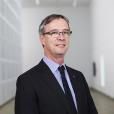

Showing 141 - 160 of 236 results


Role at ANSTO
ARC Linkage grant will use synchrotron techniques to analyse and evaluate innovative battery technology
ANSTO and University of Wollongong team up to sort sci-fi from sci-fact
Using uranium to create order from disorder
The first demonstration of reversible symmetry lowering phase transformation with heating.
A look inside an instrument that sees the nanoverse: Meet Emu
Small Modular Reactors: An overview
Significant increase in production and market share: ANSTO Silicon
Next-gen wearable electronic devices
Ultra-flexible electronics has many potential applications within areas such as for example the military, healthcare and energy.
A changing of the guard in the 2018 ANSTO Top Coder Competition
The winners of the 2018 ANSTO Top Coder Competition were decided at two keenly contested grand finals with Robotics hosted by UTS and Coding held at the ANSTO Discovery Centre.

Role at ANSTO
Nobel Prizes recognise insights at molecular and atomic scale
The Nobel Prizes for Physics, Chemistry and Medicine have been announced.
2017 ANSTO, Australian Synchrotron Stephen Wilkins Medal awarded
PHD student Dr Leonie van ‘t Hag has been awarded the prestigious 2017 ANSTO, Australian Synchrotron Stephen Wilkins Medal for her PhD thesis.
Fine particle pollution peaks during bushfires
Recent catastrophic Australian bushfires produced extremely high levels of fine particle pollution.
Environmental Protection
ANSTO is committed to minimising the environmental impact of its activities and to implementing strategies which have a positive effect on the environment. The ANSTO Work Health Safety and Executive Committee oversees this process.
Innovator in energy and sustainability uses power of synchrotron light to make advances

Role at ANSTO
Research brings a better understanding of the stability of very old groundwater
Groundwater experts from ANSTO and UNSW have led a collaboration of Australian and American researchers to analyse the composition of deep, very old groundwater and develop a new conceptual framework that describes the degradation of carbon over time in the subsurface.
Determining the extent of soil erosion on a NSW vineyard

Australian Critical Minerals Research & Development Hub
The Australian Critical Minerals Research and Development Hub (the Hub) unites the expertise of top Federal science agencies: ANSTO, Geoscience Australia, and CSIRO with the aim of addressing technical challenges and drive collaborative research across the critical minerals value chain.